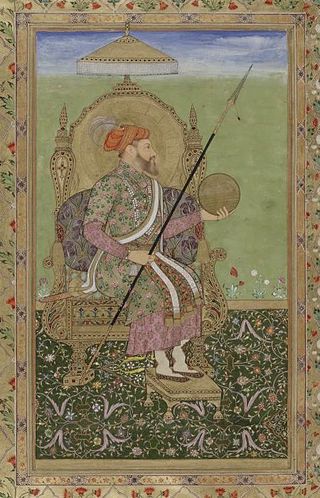
Shah Jahan
Shahab-ud-din Muhammad Khurram ( 5 January 1592 – 22 January 1666), better known by his regnal name, Shah Jahan (Persian: شاه جهان, lit. ‘King of the World’), was the fifth Mughal emperor, and reigned from 1628 to 1658. Under his reign, the Mughal Empire reached the peak of its cultural glory. Although an able military commander, Shah Jahan is best remembered for his architectural achievements. His reign ushered in the golden age of Mughal architecture. Shah Jahan commissioned many monuments, the best known of which is the Taj Mahal in Agra, in which is entombed his favourite wife, Mumtaz Mahal. His relationship with Mumtaz Mahal has been heavily adapted into Indian art, literature and cinema. He owned the royal treasury and several precious stones such as the Kohinoor, worth around 23% of the world GDP during his time, and he has thus often been regarded as the wealthiest Indian in history.Shah Jahan was considered the most competent of Emperor Jahangir’s four sons. Jahangir’s death in late 1627 spurred a war of succession, from which Shah Jahan emerged victorious after much intrigue. He put to death all of his rivals for the throne and crowned himself emperor in January 1628 in Agra, under the regnal title “Shah Jahan” (which was originally given to him as a princely title).
Lists containing Shah Jahan :
55 Popular And Great Indian Rulers

India is one of the richest countries in the world in terms of history and heritage. Many great rulers in the history of the World have been born in our country. This list includes Indian kings and rulers of India who have ruled in India, from the BC era to modern India. There may be…
